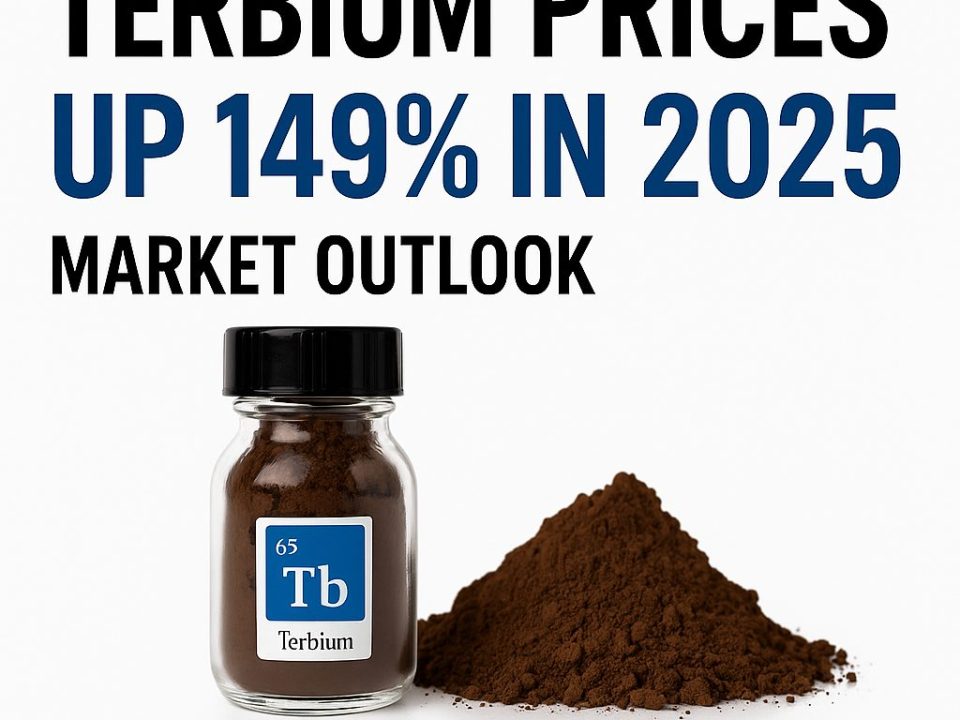
Weekly News Review November 3 – November 9 2025
November 9, 2025
Weekly News Review November 10 – November 16 2025
November 16, 2025Neodymium has quietly become one of the standout performers of 2025. Once viewed as a niche rare earth metal, it has moved centre stage as the world pushes deeper into electrification, wind power, compact electronics, and even next-generation medical devices.
Prices have risen sharply this year, climbing around 56% year-to-date as of mid-November (current neodymium prices). The surge reflects a powerful combination of robust demand, policy uncertainty, and the continued reality that China remains the global bottleneck for rare earth refining.
From steady to soaring
After a subdued 2023–2024 period, neodymium has decisively reversed course. Prices are now well above 2021 levels, driven largely by increasing consumption from electric vehicles and wind turbines — both of which rely on NdFeB permanent magnets, the strongest commercially available magnets.
A fresh geopolitical twist arrived in late October when China suspended newly planned rare-earth export controls for one year as part of a limited U.S.–China détente. While this move temporarily eased fears of immediate supply disruption, it also reminded global markets that Beijing still controls roughly 85% of processing and separation capacity — the true bottleneck in the supply chain.
Source: Reuters – China pauses new rare earth export controls, 2025
Demand keeps broadening
On the demand side, the growth engines remain strong. The International Energy Agency’s 2025 Outlook projects continued global expansion in electric vehicle sales — each EV using one or more high-performance neodymium magnets in its drive motor.
Wind power is reinforcing this trend. The Global Wind Energy Council (GWEC) expects another record year for wind installations, with direct-drive turbines heavily dependent on neodymium and dysprosium for their high-efficiency generators.
But the story no longer ends with energy and mobility. New applications are emerging in medical technology, where neodymium magnets are used in wearable health sensors, MRI systems, surgical devices, and even experimental magnetically guided cancer-therapy equipment.
Sources: IEA – Global Critical Minerals Outlook 2025 / GWEC – Global Wind Report 2025
Why supply won’t catch up quickly
Although Western nations have been working to secure new rare earth deposits — from the U.S. to Australia and Sweden — raw mining is only the first step. The real bottleneck lies in processing and separation. Neodymium isn’t mined as a pure metal; it’s chemically separated from complex ore mixtures, an area where China maintains a decades-long head start.
Developing a comparable refining and magnet-manufacturing base in the West could take well into the mid-2030s, even under favorable political and funding conditions. The U.S. and EU are rebuilding expertise and infrastructure, but the knowledge gap remains wide. For the foreseeable future, China’s dominance in rare earth refining remains firmly entrenched.
The outlook: steady bias upward
With prices already up more than 50% this year, short-term corrections are possible — but the broader trajectory still points higher. As export-policy uncertainty lingers and demand from EVs, renewables, and medical technologies expands, neodymium’s long-term fundamentals look robust.
Analysts expect continued upward bias through 2026, punctuated by short-term volatility as buyers and producers react to evolving U.S.–China trade relations and the expiration of the current one-year policy truce. (more detailed 5-year neodymium forecast here)
Why this matters for investors
For investors, neodymium’s story isn’t just about short-term price moves. It’s about owning a tangible asset that sits at the crossroads of industrial transformation. Physical neodymium is a direct way to participate in the electrification trend, offering potential upside when policy or supply-chain risk returns to the spotlight.
As one of the most indispensable elements for the green economy, neodymium combines scarcity, strategic importance, and growing demand — a trifecta that continues to attract attention from both industrial users and private investors alike.
✅ Key takeaways
- Neodymium prices are up ~56% YTD (as of mid-November 2025).
- Demand remains strong from EVs, wind turbines, and emerging medical technologies.
- China still controls ~85% of global refining capacity, with no quick alternative in sight.
- Western supply-chain buildout will take well into the mid-2030s to materialize.
- Medium-term bias remains bullish, with potential volatility around export-policy shifts.






